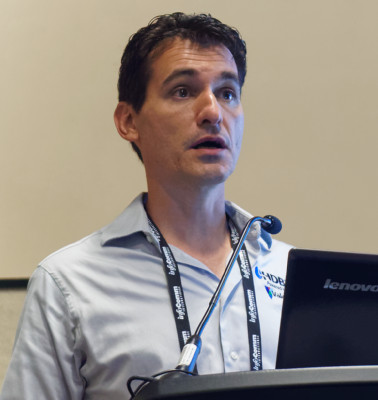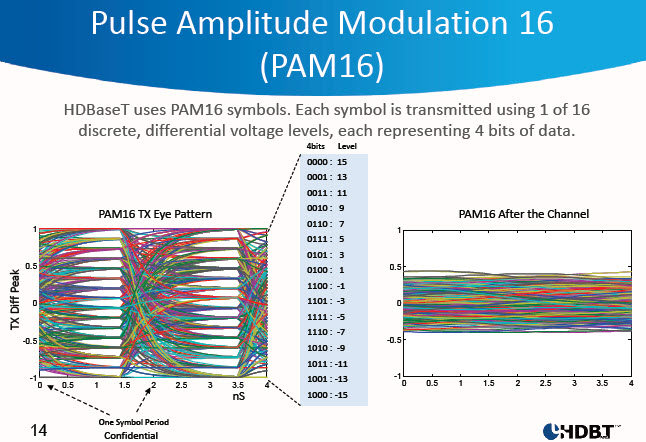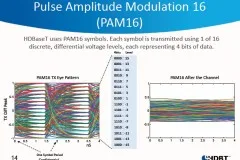
Micha Risling is from the HDBaseT Alliance and also works for Valens, the semiconductor company behind the technology.
As had already been said, the big challenge in interfaces is how to extend for longer distance and higher bandwidth. HDMI and DisplayPort do a great job, but “how do you extend?”, he asked. The challenge is dealing with physics! Of course, at the moment, there is little or no content at 4K, but it will arrive.
Can you drive 4K over long cables and what is the right cable? There are too many different cables in many installations and extending all of them is a challenge. HDBaseT combines power, audio, video, control and networking into a single UTP cable. Initially HDBaseT used straight Cat5 cable for 1080P, but 4K pushes things and better cables are essential.
4K is already happening in ProAV in a range of different applications. The HDBaseT Spec V2.0 was completed 18 months ago and supported 4K over 100m, but you have to use Cat 6 cable (Cat5e may work, but is not guaranteed over the whole range).
Power over a fibre is a challenge, but other data can be passed along fibre. The biggest problem in sending data over distance is signal integrity and the quality of the cable is a real issue. HDBaseT uses a scheme called Pulse Amplitude Modulation – PAM – which Risling said is more like ethernet. There are 16 symbols used to signal different voltage levels.

HDBaseT has an asymmetric back channel with lower frequency requirements, although it can still support 300Mbps back to the host system. Risling said that there is strong market acceptance now, but USB latency can be a big problem.
In questions, Risling said that if you know optical well, it can be more reliable than copper, but if you don’t it can be worse. (Others told me that they thought he was negative about optical as there are a number of optical networking solutions that don’t carry power as HDBaseT can!)

